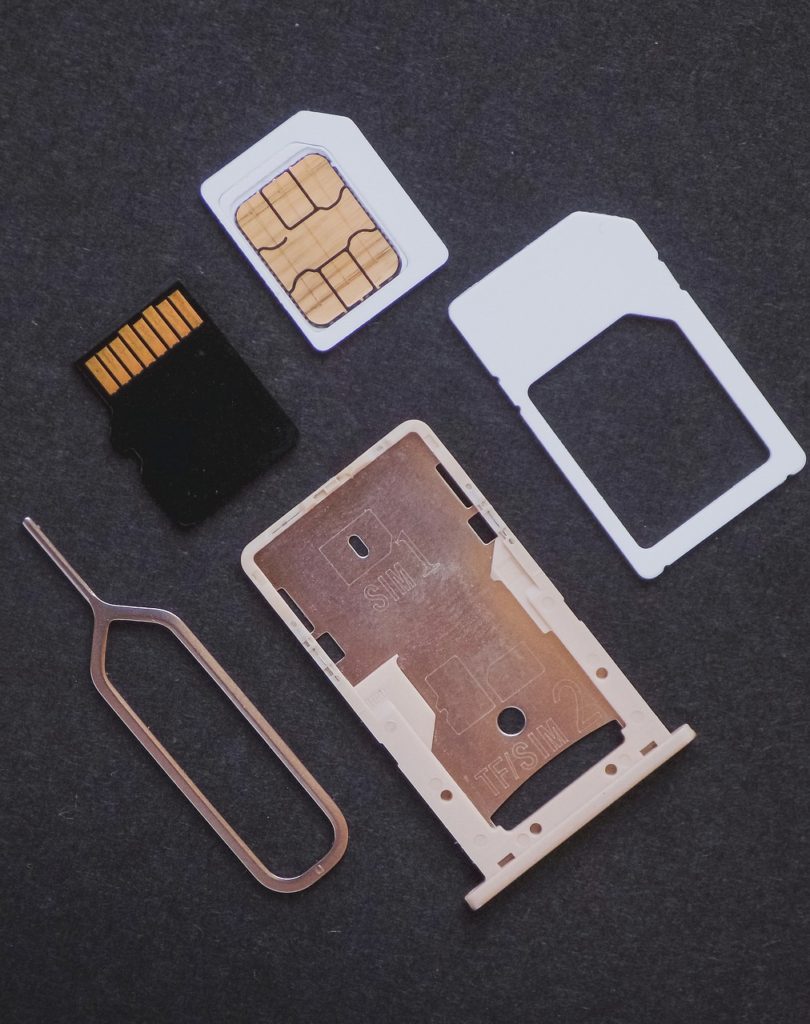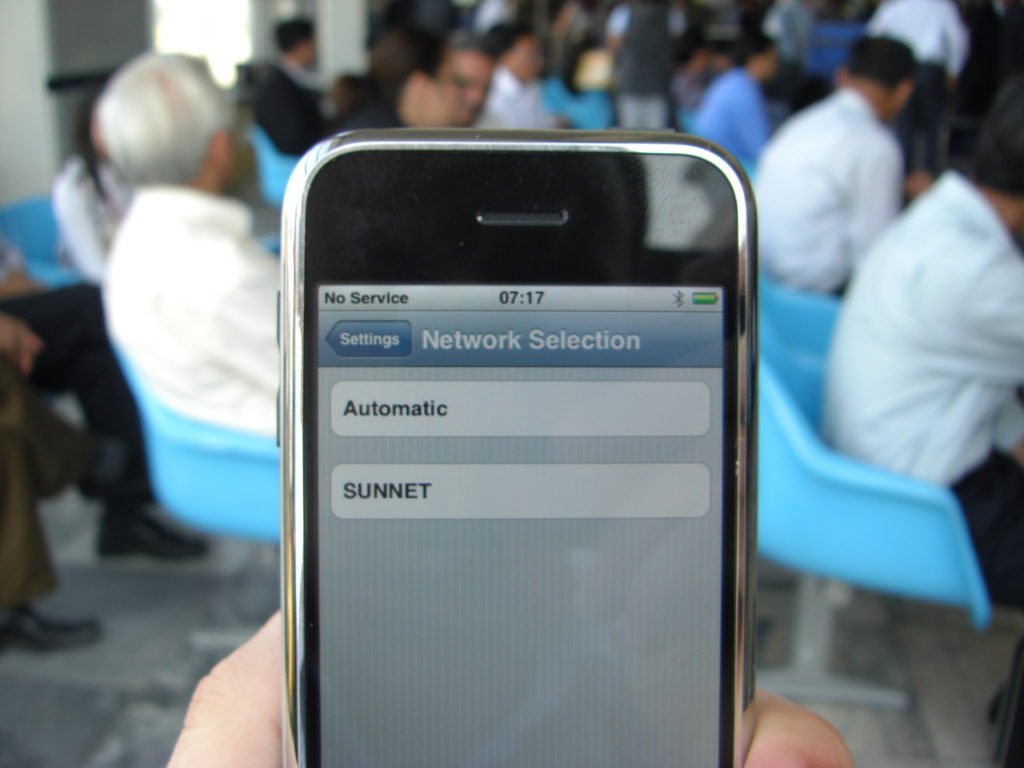If you’re traveling abroad pretty much the first thing that you’re going to want to know is how you can potentially avoid roaming costs. The first thing that we can say is that there are actually many ways that you could potentially avoid roaming costs. One of the things that we always talk about on the site is having a strategy before you go abroad. What we’ve seen from experience and from what people let us know is that roaming costs are usually added to your bill at the end of the month for one main reason. You really didn’t have a plan in place to avoid them and you just turned your phone on while you were abroad and that pilled up charges.
We don’t want you to do that. Before we start talking about, get a SIM card or some of the other topics that we typically cover what we want to do is talk about what you shouldn’t do. We know that some of the things that we’re going to say could sound a little extreme. Like if you turn your phone on for a couple of seconds you can be charged for roaming. The whole theme of the article though can be summed up by saying it’s better to be safe than sorry. If you know that you essentially did everything right you’re going to be in a better position to try and fight your phone company over roaming charges that you consider unjust.
Although phone coverage and everything that revolves around it has changed and certainly advanced in the last couple of years roaming is still a concern. So here are some of the tips and tricks to make sure that you can avoid roaming fees at all costs.
- How Are Roaming Fees Calculated?
- Can I Really Get Charged Roaming Fees For 5 Minutes of Coverage Abroad?
- Steps To Make Sure You Don’t Incur In Roaming Fees
- International Travel Plans & Roaming Fees
- International SIM cards and roaming fees
- Are Roaming Fees Really All That Bad?

How Are Roaming Fees Calculated?
Roaming fees are something that has been around for a while. In the past, before data became a thing, you would be charged roaming fees if you received a call or made a call outside of your area of coverage. In some of the early stages of cell phones, your area of coverage was sometimes nowhere near to being national. Therefore roaming fees could even add up if you were making calls within your own home country. These days we have data, and you can actually get charged a fee for using data outside of your area of coverage.
As far as how the fees are actually calculated the scary part is that you really can’t know for sure. There are phone companies that have unique policies. For the most part, the basic idea is the same though. You’re going to be charged an extra fee for using your phone outside of your area of coverage. In some companies today that means that for example the data that you use counts double if it’s used outside of your coverage area. When this happens before you know it you could be out of data for the month and that’s when they start charging for extra use of data or minutes.
In the old days, the costs would really pile up because the cost of call per minute for an international call, for example, would be much higher than what you were paying locally. Of course, your phone company would add the roaming costs and a small call could rack up a huge bill. The problem that many people faced was that their phones would go into roaming mode and they wouldn’t even notice. That could happen locally not just internationally. Another one of the problems was that roaming costs could abruptly and the way that they were being billed would change within the length of your contract. At the end of the day, one of the big problems that we still have with international phone usage is that the billing and fee system is not overly clear in any phone company. That’s why you want to avoid these fees.
Can I Really Get Charged Roaming Fees For 5 Minutes of Coverage Abroad?
Some companies are more lenient than others on how they essentially enforce roaming fees. You have to remember that most of the time your regular phone company has to pay another company to be able to get you coverage in that country. We know that many people just see it as a way for their phone companies to rip them off. No matter how you look at it though, there is a chance that you could get hit with roaming fees for minimal usage. Especially these days because if you have a phone that’s not getting any data at any point where it’s able to hook up to a wifi network or a foreign cell network it’s automatically going to start using that data to download messages, update apps, and so on and so forth.

Therefore if you actually think about it if you were to leave your data on for 5 minutes you could be using up a ton of gigabytes with all of the information that’s going to be coming into your phone. Even being able to hook up to a network and get the local time automatically updated on your phone takes up data. If you don’t have your phone’s settings configured correctly you could end up paying a pretty penny for 5 minutes of data. We could be talking about north of 20 or 30 dollars for a small window of time. Of course, as we mentioned the actual amount of money that you could pay is going to vary depending on who your service provider is.
Steps To Make Sure You Don’t Incur In Roaming Fees
We’ve already established that even very little time on your phone while abroad can lead to some pretty nasty roaming fees. What can you do to avoid them? We mentioned having a plan at the start of the article. Even if you don’t really know how you’re going to get coverage abroad the first thing that you need to do is turn off your data usage. On many phones, you just have to hit an icon that has two lines one going up and one going down. We would recommend that if you’re taking a trip you do this once you get on the plane in your starting spot.
People don’t actually fully turn off their phones on most flights anymore. They actually turn off their data only. So this is a step that if you’re young you probably do anyway. A lot of older folks though would turn off their phones once they got on a plane and turn them back on at their destination. If you do that and you don’t turn off the data, the time that you spend with your data abroad could lead to roaming fees. The first step is to turn off your regular data, but with that, you’ll have no coverage.

The second step, therefore, is to have a way to obtain coverage once you’re in the new country. There are a couple of ways that you can do that via international SIM cards, an international travel plan with your regular provider. We’ll get to those though. If your data is turned off that doesn’t mean that you can’t have wifi coverage to use different apps and of course your browser. During a flight you can turn the data off and use the inflight wifi, you can use hotel wifi and public wifi spots without actually activating a foreign SIM card or anything else. If you just make sure that your regular data is turned off the entire time that you’re in a foreign country you shouldn’t get roaming fees.
International Travel Plans & Roaming Fees
Some of the people that we still see getting hit with roaming fees are those who try and fail to activate their international travel plans. The problem is usually that you think the plan is activated and you’re using your phone as you normally do. These mistakes can be very costly. Your international travel plan is already 10 dollars a day if you continue your use on roaming the cost just goes through the roof! Maybe another step towards avoiding roaming fees would be to make sure that your international travel plan is activated.
Activating An International Travel Pass
The process of activating an international travel plan or day pass actually needs to start in your home country and ideally at least a week or more before you travel. Why do we recommend this time period? Just in case you realize that your plan is not compatible with the international day pass or any other international feature that your service provider could have. To check if your plan is compatible you can go on your provider’s app on your phone and look up international day pass options.
With most providers when your plan is eligible for the international features, you’re going to be able to activate the plan within the app fairly quickly. If your plan is not currently compatible with international features be sure to call or visit your service provider. In most cases, as we mentioned you’re going to be able to find all of the information that you need on the app. You can actually activate it and deactivate it right from there.
There are some companies where the international travel pass fee of 10 dollars will automatically kick in, so you actually don’t have the possibility of getting roaming fees. If you’re reading this and thinking I have no clue what’s going on you’re the perfect candidate to incur in unwanted roaming fees. Call your service provider or literally visit a store and get help. Spending maybe 30 minutes tops there could end up saving you a ton of cash.
International SIM Cards and Roaming Fees
When you go the SIM card route which is something that we talk a lot about on the site, it’s actually a lot harder for you to incur in roaming fees. Especially if you’re actually removing the lets say every day SIM card that you use when you’re out and about in your home country. If the SIM card is literally out of the phone then there is 0% chance that you’re going to be hit with a roaming fee that you’ll end up regretting. If you do get hit with some type of roaming fee this way that means that your mobile service provider is stealing from you. There is essentially no way that you can get roaming fees this way.

The problem that we’re seeing arise today comes with eSIMs. When you have a phone that just runs on an eSIM then you really need to be careful to make sure that you essentially activate the right SIM. It’s like the issue that we see with people who don’t turn off their data before they leave their home country. It’s something that is overly simple and that virtually anyone can do. Forgetting though to make the adjustment can cost you hundreds of dollars. This is certainly not a joke, it’s just the reality of how things go.
Would We Recommend That You Remove Your Regular SIM Entirely?
To be clear we’re talking about phones with dual-sim capabilities here. If you don’t have a phone that has dual-sim features then you have to remove the existing SIM to be able to put in a new one. You’re not going to have any option to do anything else. When you have dual SIM capabilities there are two things that you need to consider. If you leave your everyday SIM on you run the risk of making the mistake to not turn off the data from that SIM. That’s going to cost you money.
Yet a lot of people have reported data loss on their original SIM when they remove it or change it to another phone. Particularly the data loss revolves around losing some saved contact numbers that you have on your phone. If your fear of data loss is bigger than your fear of having to pay roaming fees leave it on. If you want to eliminate the possibility of roaming fees at all costs remove it.
Are Roaming Fees Really All That Bad?
Speaking of the fear of roaming fees, we’ve talked about the reason why roaming fees exist, and how they were actually implemented in the first place. Now, a lot of companies advertise that they sell plans without roaming fees. What does this actually mean? Well, sadly in some companies the no roaming fee policy actually means that you don’t even have the possibility of getting international coverage through your regular plan. The other option with some of the service providers that promise no roaming fees is that they’ll charge you other fees. You’ll never see the term “roaming fees” in the bill. They’ll just call it charging you for international data.
There are companies like AT&T that could actually implement a successful no roaming fee policy and give great international rates. Why AT&T, well they have subsidiaries virtually all over the world. So you could potentially connect to their local network in any part of the world with your regular plan. Spoiler alert, they don’t do that! They have the international day pass option. Not a no-worries policy. As we mentioned before the other reason why roaming fees essentially exist is that your service provider has to piggyback coverage from other company’s local network in areas where they don’t provide coverage. Therefore, the fees are there to cover the costs that your service provider has to get you coverage.

Just to answer the original question, the answer is, totally yes! Again, as we mentioned before one of the main problems is that roaming fee policies can change. A lot of times you’re not even sure what you could potentially end up paying. At least with the international day pass option, you know that you have to pay a 10 dollar daily fee for coverage. Roaming fees can pile up and get really bad indeed.
Final Thoughts on Avoiding Roaming Costs
When we talk about having a plan to avoid roaming costs, we’re of course talking about knowing how to activate your travel pass or getting a SIM card or just literally turning your data off and running your phone on wifi for the whole trip. A lot of that is just being aware of what your phone is doing. The mistake of not double-checking that you turned off your data could cost you money. We would totally recommend that when you arrive in a new country you essentially stop what you’re doing and take 2 minutes to make sure that everything is where it needs to be.
We usually don’t talk like this on the site, but really getting hit with roaming fees these days is totally the fault of people who are unprepared. If you have a plan in place and you just take your time to be able to execute it you’ll be fine. Obviously, some options that we’ve presented here to avoid roaming fees will ultimately be cheaper than others. In many ways, though the trouble with roaming fees is you really have no idea what you’re going to pay. In all of the options that we’ve presented, it’s exactly the opposite. You’ll know how much data you’re getting with your SIM card or how many days of the travel pass you’ll have to pay.
